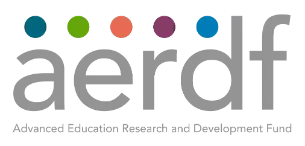The need for innovative solutions to help students recover from pandemic learning disruptions and an unpredictable future of work has never been more urgent. The nation needs all hands on deck — educator and community partnership, high research & ethical standards for ed tech and importantly, federal and state investment in inclusive education R&D.
As Chief Learning Officer at the Advanced Education Research and Development Fund, I have seen first-hand the real impact that systemic change and student-centered and research-based design of educational technology can make. Understanding the experiences of students, caregivers, and educators is essential to staying learner-focused from the outset, especially because caregivers hold dreams for their children’s futures, and teachers intimately know young people’s academic needs and students are who we serve.
Involving researchers, developers and policymakers from the beginning makes it possible to identify the right opportunities and help design solutions that align with the needs of all students. Then, when a promising innovation takes shape, it’s essential to bring in industry experts and investors who can provide the financial backing for an expansion from a single classroom or school.
Read Chris’ opinion piece with The74 to learn about three key criteria that he recommends teachers, administrators and education leaders should look for when determining whether to introduce new education technology and curriculum into their districts, schools, and classrooms.




